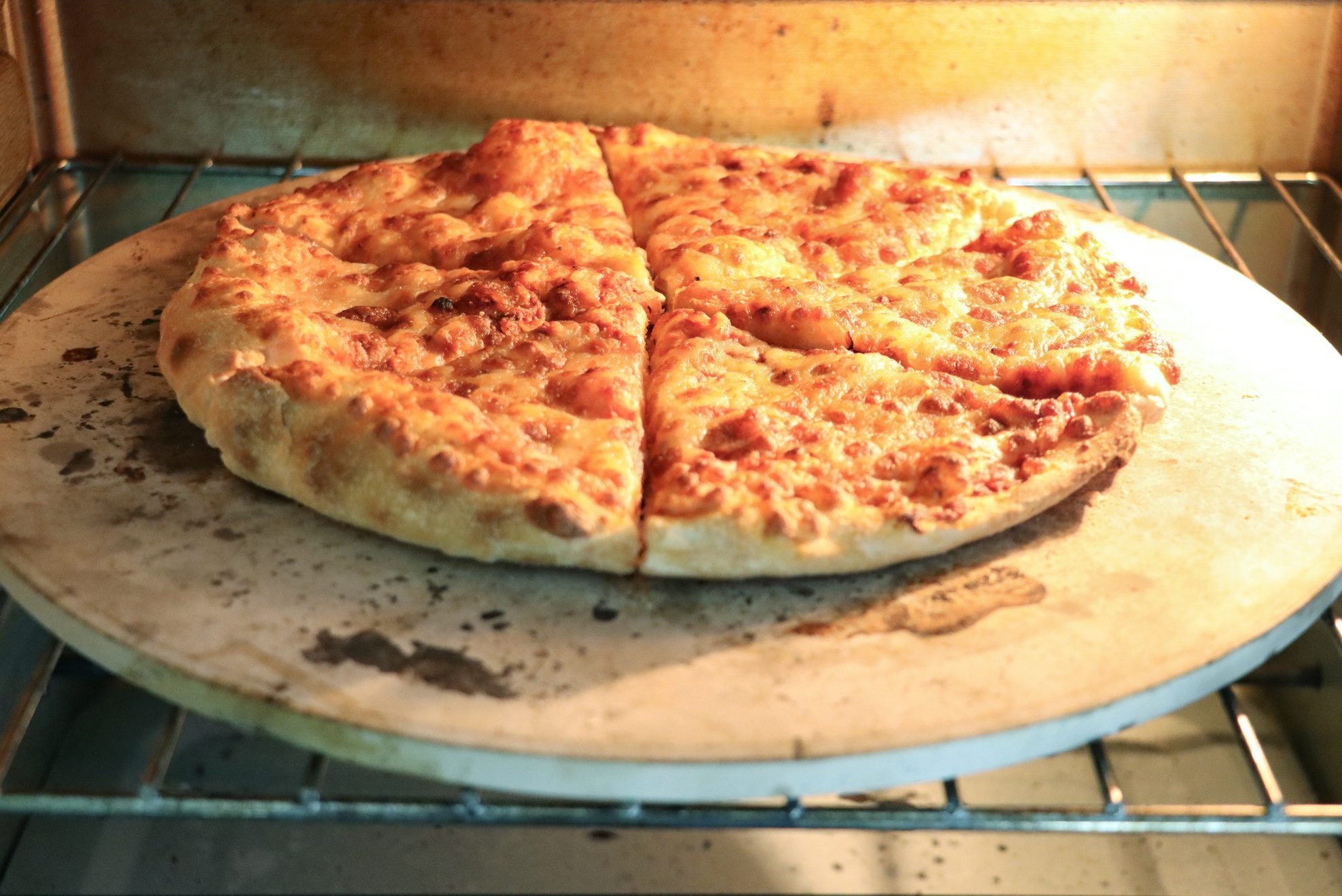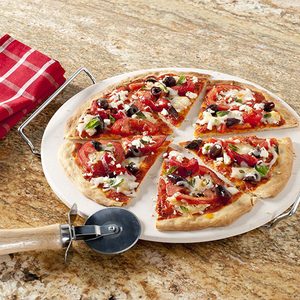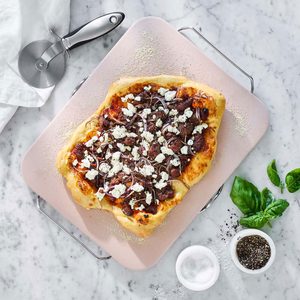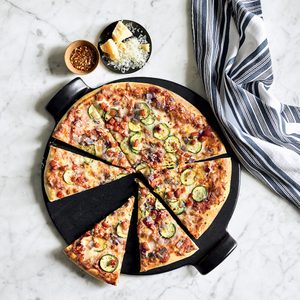Love a homemade pie or even a frozen pizza? Anyway you slice it, learning how to use a pizza stone (and how to care for it) will up your at-home pizza game.

How to Use a Pizza Stone

For crispy crusts, you need a pizza stone. Whether you reach for a frozen pizza ( explore ways to make frozen pizza better) or make pizza dough from scratch, having a pizza stone at home can change your at-home ‘za experience. Don’t have one of these pizza-making tools? Our Test Kitchen pros explain how to use a pizza stone and how it can transform your pie (even leftover pieces) into slices to savor.
Also, discover how to clean your pizza stones properly!
What is a pizza stone?
A pizza stone is a ceramic disc or slab that’s primarily used for cooking pizzas in conventional ovens.
Really good pizzas are often baked at high temperatures in brick ovens or special pizza ovens. However, conventional ovens can’t reach those temps (some brick ovens can hit 800°F or more!). Ceramic pizza stones, however, can get very hot—up to 500°.
Using a pizza stone in your oven allows you to get the crisp crust on pizza that those specialty ovens provide. Without this piece of bakeware, you won’t get that crisp crust that we all crave when baking a homemade pizza.
Types of Pizza Stones
Pizza stones of all shapes and sizes are widely available at kitchen shops and big box stores. You’ll find most of these stones are unglazed ceramic slabs, though there are some options, like this Emile Henry pizza stone, that are glazed. These finishes can be easier to clean than an unglazed stone.
Stones also vary in thickness. Thin stones heat more quickly but won’t hit super-high temperatures. Thicker stones will get hotter, but be sure to budget extra time for the stone to preheat along with the oven.
How to Use Your Pizza Stone
How to use a pizza stone for the first time
Unfamiliar with this ceramic baking sheet? There’s very little prep required. After removing it from its box, wipe down the stone with a damp cloth to remove any dust or remnants from its package. That’s it!
How to use a pizza stone in the oven
Using a pizza stone in your oven couldn’t be easier. The only rule, according to Catherine Ward in the Test Kitchen, is to preheat the stone along with the oven. That means a cold stone goes in a cold oven. Do not place a cold stone in a hot oven. “The thermal shock of putting cold ceramic in a hot oven will shorten the life of the stone,” she explains. “It will cause it to crack eventually.”
When the oven and stone are preheated, just pop your pizza right on top. For frozen pies, that means setting the ‘za right on top of the stone.
If you’re making pizza from scratch, you can transfer the dough with a pizza peel—a super fun tool that makes you feel like a real pizzaiolo. You can also prep your pizza on parchment paper and then slide the pizza (parchment and all) right onto the stone to bake.
Use that same pizza peel (or even a cookie sheet) to remove your pizza from the stone when it’s done baking. Catherine recommends allowing your pizza stone to cool completely before removing it from the oven.
How to use a pizza stone on the grill
Pizza stones work great on the grill. That’s because the ceramic material is designed to withstand very high temperatures.
To use a pizza stone on the grill, start your grill as normal. You’re aiming for a high temperature—400° or more—so feel free to crank up the heat on your gas grill and fill the kettle of your charcoal grill with plenty of fuel.
Once the grill is hot and ready, place the pizza stone onto the grate of the grill. Cover and let the stone preheat for about 15 minutes. Heating the stone is essential. It’s what’s going to give your pizza a crispy crust! When you’re ready, place your pizza on the stone and cover again. Cook until the cheese is gooey and the crust is golden; time will vary depending on how intense the heat is.
How to Clean a Pizza Stone
Thanks to plenty of gooey cheese and baked-on sauce, pizza stones get dirty. However, when you go to clean these ceramic slabs, you’ll want to skip the soap. Really!
“These stones are porous,” explains Catherine. “It will absorb and forever retain the taste of that dish soap.”
Instead, use a plastic or metal scraper to clean away any residue. Then wipe away any excess grease with a wet cloth. Allow the stone to dry completely before using it again.
Over time, these pale stones will get dark or even black, says the Test Kitchen’s Mark Neufang. But don’t fret. “Like cast-iron pans, the more seasoned these stones get, the better,” he says.






















